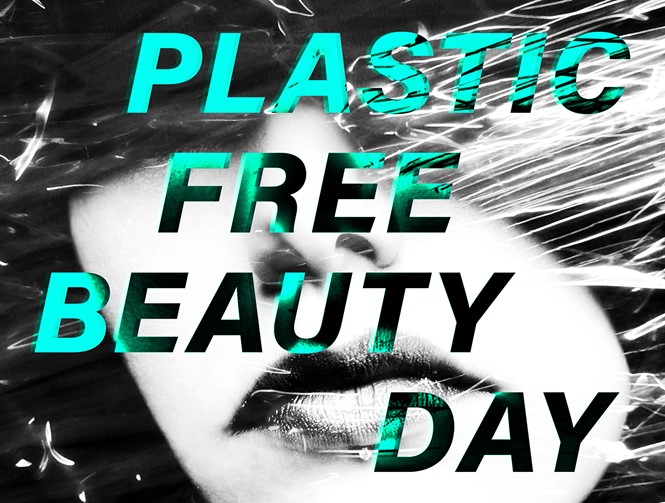Looking like the real thing - celebrating plastic free beauty day

To mark this year’s Plastic Free Beauty Day, a day dedicated to challenging the use of plastic packaging in the beauty brands, Transform magazine spoke to three experts in the sustainable product and packaging design space about the role beauty brands play in the wider context of global sustainability, the risks of greenwashing and how to avoid it, and which brands are getting it right.

Jo Barnard, founder and CEO at industrial design agency, Morrama
Due in-part to hygiene purposes, the beauty industry is highly dependent on plastic and single-use materials. In fact, it is one of the top offenders for plastic waste, contributing to 120 billion units of packaging every year, and sadly, most of it is not even recyclable.
The use of refills has gained traction within the cosmetic space as they prolong the use of material value, minimising the need for new materials and lower CO2 emissions. Whether that’s through refillable pouches or long-lasting reusable aluminium packaging, beauty brands need to work with consumers’ habits in mind in order to ensure sustainable credentials don’t mean a compromise on the offering and user experience. This was a key driver behind the custom deodorant packaging design we produced for UK brand Wild – the world’s first zero plastic refill deodorant. With a reusable case made from aluminium and post-consumer recycled plastic, the refills are 100% compostable, significantly reducing the impact consumers are having on the planet without them needing to change their behaviour.
However, whilst refills and other sustainable initiatives such as using recycled plastic are often great ways to minimise the environmental impact, it isn’t always the case. With brands treating green efforts as a marketing tactic because it’s ‘popular’, consumers are becoming more wary of ‘greenwashing’, so it’s really important for companies to do their research. Materials, form, functionality, logistics and the consumers’ needs, expectations and anticipated behaviour must all be considered in order to create a truly sustainable packaging solution.”

Jenny Cook, strategist at brand design and innovation agency, Echo
Environmental issues are being increasingly prioritised and while many brands are making impressive sustainability pledges, discerning consumers remain sceptical. Brands are under scrutiny and the most tangible reflection of these commitments are communicated through packaging. Blue Planet II was the catalyst to the plastic backlash and as the definition of sustainability evolves, brands need to work fast to align with people’s purpose-driven values. Awareness days such as Plastic Free Beauty Day are important to drive conversations around plastic waste but people don’t want to be guilt tripped by the brands producing the waste in the first place!
Having a ‘plastic free’ or ‘zero waste’ beauty routine used to be a niche concept, options were limited and the focus was on ethics rather than efficacy. However over the last few years a slew of nimble, clean slate brands have shaken up the category with disruptive designs and radical transparency to gain cult followings. Plastic free heroes such as solid shampoo bars have won many of us over not just for their eco-halo but for their greater convenience, value and artisanal aesthetic.
The whole language of beauty is evolving with sustainability pushing the conversation. ‘Clean beauty’ once stood for product formulation but today it’s a much more holistic concept. ‘Clean’ is a 360 proposition that should be embedded into the brand ethos and considered at every point of the product life cycle. As the demand for transparency grows and consumers become increasingly forensic, touting yourself as simply ‘sustainable’ won’t cut it. Today ‘plastic-free’ is just one marker of sustainability in a long list of expected eco credentials. UK retailers such as Boots and Look Fantastic understand this growing consumer need and are offering online filter searches for physical attributes such as plastic free, waterless and refillable but also higher order sustainability messages such as Carbon Neutral and B Corp. As we enter Plastic Free Week and Plastic Free July, it’s important for brands to walk the walk and not just talk the talk. People will be quick to call out brands with vague claims or who simply jumped on the plastic free bandwagon with a singular variant without showing signs of progress throughout the rest of their portfolio.

Helen Hughes, sustainability director at design agency, Design Bridge
Conscious consumerism has become part of the wider holistic wellbeing trend that is driving the sector, and is posited as a component of a more fulfilling and nourishing beauty routine.
Unlike in other sectors such as FMCG, which is driven by routine cost - sensitive purchases, the beauty buyer is often motivated by self-care or gifting. The industry therefore has a higher price-point and a position where the packaging is integral to the product function. Beauty brands can help explore new and emerging packaging materials, systems and delivery solutions which may be more costly while still in their infancy.
For smaller start-ups, it's essential to design in sustainability from the outset in a way that is relevant and meaningful to the sector. Actions have to be tangible and understandable. Take D2C femcare brand Callaly, for example. Designed to sit proudly on the bathroom shelf during use, the brand delivers customisable period products through people’s letterboxes; all in packaging that is recyclable, compostable or biodegradable with clear communications on how and where to dispose of packaging.
Small batch brand Haeckels deliver super concentrates in highly desirable containers that make refilling an intrinsic and rewarding part of the experience. MAC’s long-established ‘Back-to-Mac’ programme incentivises people to return empty packs so they can work with reprocessing partners to give the plastic a second life.
Where emerging brands are becoming increasingly sustainability driven at origin, it’s trickier for established powerhouses to move with the same level of agility. Yet, what they lack in speed, they make up for in influence. With large, loyal customer bases, big beauty brands have the power to deliver impact on a broader scale through even the smallest of positive actions such as clearly communicating recyclability or use of recycled plastic in packs. While their journey towards circularity may be slower than their startup counterparts, the important point is to start that journey nonetheless, and be transparent every step of the way












